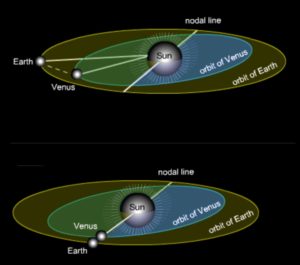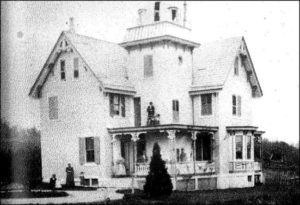JOHN G. JACKSON

Answer
Born on September 8, 1818, in what is known today as the Dixon-Jackson House, J.G. Jackson studied at the Westtown Boarding School beginning at age 14. In his 20s, he began teaching science and astronomy at Westtown. Jackson became a surveyor’s apprentice when he was 21, mastering the profession while working for the government in Ohio. By age 30 (1848) Jackson was supervising the family’s Hockessin saw mill operation, doing surveying within New Castle County, supervising the daily operations of the limestone and marble quarries on the family’s property, and overseeing construction of a new home for his family northeast of Valley and Southwood roads.
John G. Jackson became a notary public for New Castle County in 1857 at age 39. In November 1864, Jackson successfully won the election to become a State Representative for New Castle County in the 73rd Delaware General Assembly for two years (January 3, 1865 to January 1, 1867). Jackson served as Chief Engineer for the Wilmington & Western Rail Road’s construction between 1870 and 1872, and its route remains a testament to his skills as a surveyor and engineer. In 1880, at age 62, Jackson began to embrace retirement by selling the quarry business. Jackson continued his surveying activities in later years as he applied for a patent related to surveying in June 1888. Jackson was awarded Patent 392,124 on October 30, 1888, for a ‘Spirit-Level’.
 Jackson was an avid astronomer, and in 1837 he worked out the calculations for the next transit of Venus (a transit is when the orbital planes of Earth and Venus are aligned such that from the daylight side of Earth one may observe Venus as a black dot moving across the sun). When Jackson made the initial calculations, only two individuals had ever observed Venus transit the sun (in 1639). One must remember that humans did not know the precise orbits (elliptical and not circular) of Venus and the Earth or their mean distances from the sun.
Jackson was an avid astronomer, and in 1837 he worked out the calculations for the next transit of Venus (a transit is when the orbital planes of Earth and Venus are aligned such that from the daylight side of Earth one may observe Venus as a black dot moving across the sun). When Jackson made the initial calculations, only two individuals had ever observed Venus transit the sun (in 1639). One must remember that humans did not know the precise orbits (elliptical and not circular) of Venus and the Earth or their mean distances from the sun.
Jackson used his telescope, observational skills, and math knowledge to calculate current positions and then to reliably predict the future orbits of the Earth and Venus circling the sun. Adding to the complexity is the fact that the orbital planes of the two planets are different (3.8 degrees), the frequency of Earth-Venus-Sun alignment occurrence differs (105.5 years, 8 years, 121.5 years, 8 years before repeating), and the calculations are done with only a pencil and paper by kerosene lamps!
 The 1874 Venus transit was not visible in North America (it was visible in eastern China, Australia, Japan, Indonesia). Jackson was rewarded for his efforts on December 6, 1882, when he was able to document, along with other noted astronomers across North America, the transit of Venus as he and others had predicted 37 years earlier! Jackson’s work is documented in multiple astronomy periodicals of the time, and his involvement is noted in Congressional records. Jackson owned a 6-inch reflecting telescope that he most likely made himself. This would have been a large telescope for a private individual as the best observatories around the world had telescopes of the size of Mt. Cuba Observatory’s 24-inch reflector in the 1880s.
The 1874 Venus transit was not visible in North America (it was visible in eastern China, Australia, Japan, Indonesia). Jackson was rewarded for his efforts on December 6, 1882, when he was able to document, along with other noted astronomers across North America, the transit of Venus as he and others had predicted 37 years earlier! Jackson’s work is documented in multiple astronomy periodicals of the time, and his involvement is noted in Congressional records. Jackson owned a 6-inch reflecting telescope that he most likely made himself. This would have been a large telescope for a private individual as the best observatories around the world had telescopes of the size of Mt. Cuba Observatory’s 24-inch reflector in the 1880s.

J.G. Jackson is also documented as having observed “clouds” on the moon on multiple occasions. Galileo Galilei’s improvements to the telescope in the early 1600s allowed better viewing of the moon. As far back as February 1672, a “nebulous appearance” had been reported in the Mare Crisium region of the moon by Giovanni Domenico Cassini. From Cassini’s first reporting until Jackson’s time, dozens of reported sightings had occurred, with some reporting a purple color to the cloud or fog.
As part of America’s preparations for going to the moon, in 1968 NASA released a Chronological Catalog of Reported Lunar Events documenting 580 observances over nearly 300 years of cloud-like phenomena on the moon. By the early 1900s, it was well accepted that the moon did not have an atmosphere. Continued study of the moon concludes that the “clouds,” bright flashes, and other lunar phenomena are more than likely the result of out-gassing from the moon’s crust, impacts of space debris with the surface, or similar causes. Only since the Apollo flights of the 1970s have we learned the moon does have what can be considered an atmosphere (ten trillion times thinner than Earth composed of atoms of sodium, potassium, helium, argon, ammonia, methane, and carbon dioxide).
